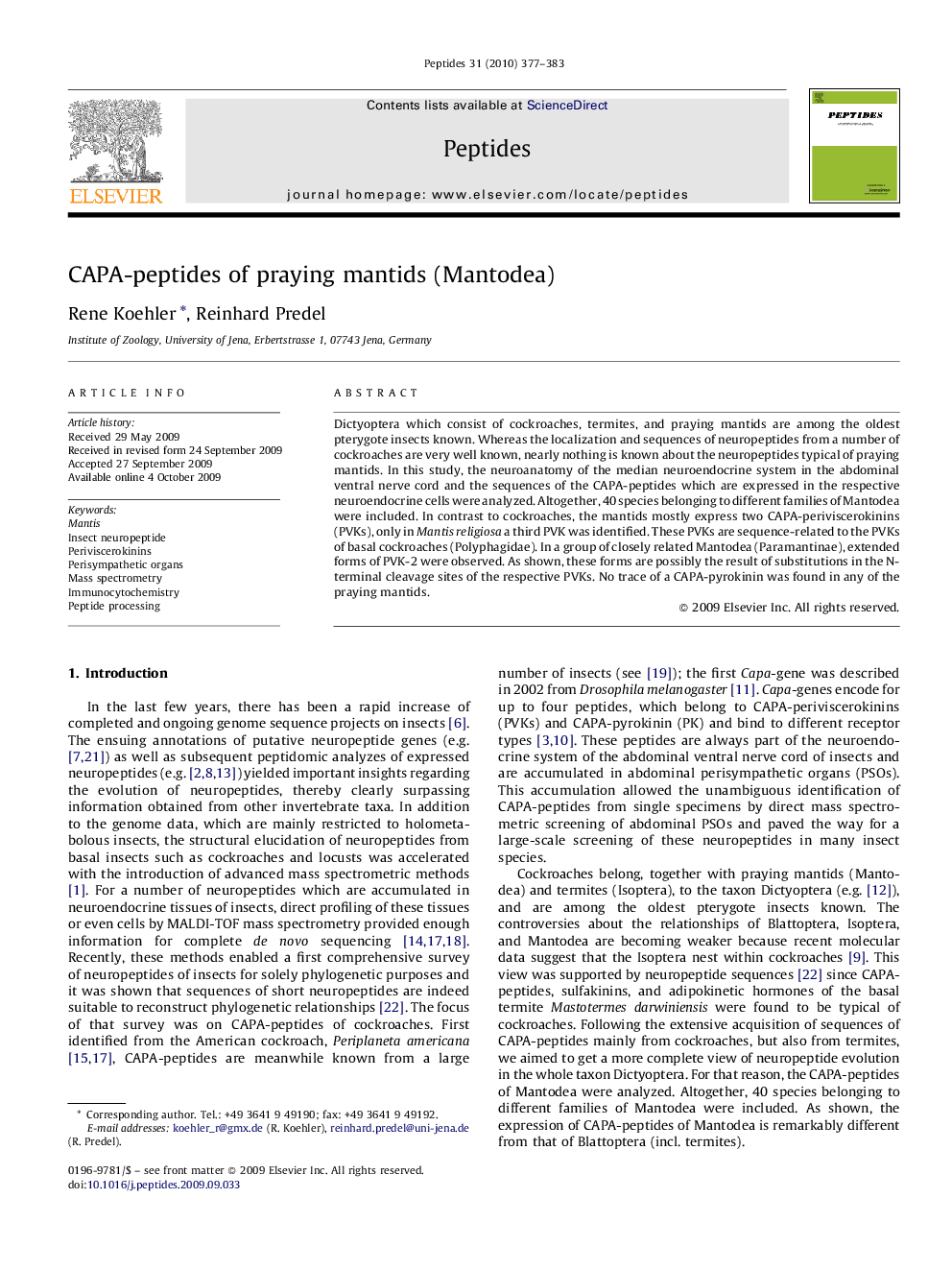| Article ID | Journal | Published Year | Pages | File Type |
|---|---|---|---|---|
| 2007270 | Peptides | 2010 | 7 Pages |
Dictyoptera which consist of cockroaches, termites, and praying mantids are among the oldest pterygote insects known. Whereas the localization and sequences of neuropeptides from a number of cockroaches are very well known, nearly nothing is known about the neuropeptides typical of praying mantids. In this study, the neuroanatomy of the median neuroendocrine system in the abdominal ventral nerve cord and the sequences of the CAPA-peptides which are expressed in the respective neuroendocrine cells were analyzed. Altogether, 40 species belonging to different families of Mantodea were included. In contrast to cockroaches, the mantids mostly express two CAPA-periviscerokinins (PVKs), only in Mantis religiosa a third PVK was identified. These PVKs are sequence-related to the PVKs of basal cockroaches (Polyphagidae). In a group of closely related Mantodea (Paramantinae), extended forms of PVK-2 were observed. As shown, these forms are possibly the result of substitutions in the N-terminal cleavage sites of the respective PVKs. No trace of a CAPA-pyrokinin was found in any of the praying mantids.
